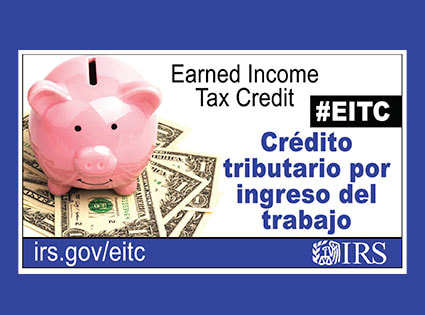More than a quarter of Alaska’s population is eligible for the Earned Income Tax Credit
The Internal Revenue Service has launched an information campaign so that the millions of Americans who earned less than $59,187 last year can get a tax credit.In the United States, one in five taxpayers does not claim the Earned Income Tax Credit (EITC). That’s why the IRS (Internal Revenue Service) has launched an outreach campaign to get them to claim it. The campaign was launched on January 27.
In Alaska, more than a quarter of the population would be eligible for this credit, since according to IRS data of the total 359,870 returns filed, there were 191,500 with incomes below $50,000. In this state, 9,540 returns were filed for incomes of less than a single dollar received during the whole year, an amount almost twelve times higher than the 830 returns for incomes of more than one million dollars. According to Yviand Serbones Hernandez, media relations officer for the Internal Revenue Service, the workers most at risk of losing their chance to claim the EITC are those with earnings below the filing requirement, or whose income decreased; those who live in non-traditional households (for example, if a grandparent raises their grandchild); those who have changed marital or parental status; those who have no children; and those who are not fluent in English, or live in rural areas, or are Alaska Native, or veterans. “The IRS multiplies its efforts each year to get all communities an equal opportunity to apply for a tax credit. The tax credit is an economic relief for those in debt, and very often it is their only way out of a problem they are going through.” In 2022, 31 million eligible workers and families in the United States received about $64 billion in earned income tax credits, with an average amount of more than $2,000. The IRS administers the EITC and urges citizens to check to see if they qualify for this credit. The IRS estimates that about 20% of eligible taxpayers do not claim it. Workers with qualifying children can get the EITC if their adjusted gross income (AGI) was less than $53,057 in 2022 ($59,187 for married filing jointly). These individuals can receive a maximum of $6,935, up from $6,728 in 2021. The maximum EITC for taxpayers without dependents is $560, available to taxpayers with AGI below $16,480 in 2022 ($22,610 for married filing jointly) and can be claimed by eligible workers between the ages of 25 and 64. Married and separated spouses who do not file a joint return may qualify to claim the EITC if they meet certain requirements. The EITC is for workers whose earnings do not exceed these limits in 2022: $53,057 ($59,187 married filing jointly) with three or more qualifying children who have valid Social Security numbers (SSNs). 49,399 ($55,529 married filing jointly) with two qualifying children who have valid SSNs. 43,492 ($49,622 married filing jointly) with one qualifying child who has a valid SSN. 16,480 ($22,610 married filing jointly) with no qualifying children who have valid SSNs. Investment income must be $10,300 or less. To receive the EITC, workers must file a tax return and claim the credit. Eligible taxpayers must claim the credit even if their earnings were less than the income requirement for filing a tax return. Free tax return preparation assistance is available online and through volunteer organizations. In 2023, Tax Day will be extended to Tuesday, April 18. |
